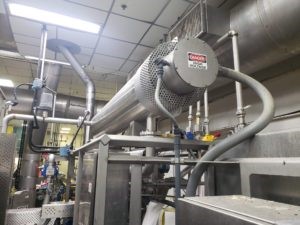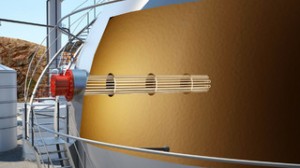Immersion Heaters For Industrial Processes
Last updated on April 11th, 2024 at 08:12 pm
 Immersion heaters are a vital step in almost any industrial process including most packaged food products today, and they are a common tool for process heating. A quality immersion heater offers the level of stability and reliability that’s perfectly suited to the food industry.
Immersion heaters are a vital step in almost any industrial process including most packaged food products today, and they are a common tool for process heating. A quality immersion heater offers the level of stability and reliability that’s perfectly suited to the food industry.
Why heating with an immersion heater is so important
Heating is a vital part of food preparation. Think of it in terms of your dinner. You likely wouldn’t pull chicken out of the refrigerator and start eating it without first cooking it. That’s the same general principle with industrial food prep. It has to be heated up to high temperatures to kill of harmful bacteria so that the food can be stored safely. Two different processes, pasteurization and sterilization are both achieved by heating foods up in the food industry. Without the necessary heating process that food would not be safe to sell or serve.
The Need for Precise Control
When preparing most food products you have a pretty narrow temperature range to heat the food at. Heat it too high and you risk burning it or eliminating most of the nutrients present. Don’t heat it high enough and you end up with food that’s unsafe for consumption when it’s finally sold. Immersion heaters provide a fine level of control.
Reliable Performance and Durability
Fuel-powered heaters require more maintenance than electric immersion heaters do and they aren’t quite as durable. They have to be worked on more often and you’ll see that you have a harder time keeping these systems running properly. To reduce this issue electric heaters should be used. They’re more durable in general and require far less maintenance. Electric heaters can be counted on to get the job done and even if one does fail, which will happen eventually, they are simple to replace.
Tank Mounted Versus In-line Heaters
 Immersion heaters come in two different varieties, those that are installed within a tank and those that are installed on the side or top of the tank but do not go down inside. Either option works well in the food industry but one is usually preferable to the other depending on conditions. The immersion heaters that go into the tanks provide heat from the inside out and while doing that the liquid does not have to be pumped anywhere. The heaters that are mounted on the side are known as inline heaters, and they heat up liquids as they pass through a tube that comes off the main storage tank. These heaters heat up liquid more rapidly, but they heat up smaller amounts at a time. When you have to pump liquid around anyway an in-line heater is a logical choice. When you want large quantities of liquid heated up to the same temperature all at once, it makes more sense to go with a solution mounted within a large tank.
Immersion heaters come in two different varieties, those that are installed within a tank and those that are installed on the side or top of the tank but do not go down inside. Either option works well in the food industry but one is usually preferable to the other depending on conditions. The immersion heaters that go into the tanks provide heat from the inside out and while doing that the liquid does not have to be pumped anywhere. The heaters that are mounted on the side are known as inline heaters, and they heat up liquids as they pass through a tube that comes off the main storage tank. These heaters heat up liquid more rapidly, but they heat up smaller amounts at a time. When you have to pump liquid around anyway an in-line heater is a logical choice. When you want large quantities of liquid heated up to the same temperature all at once, it makes more sense to go with a solution mounted within a large tank.
Efficient Performance
Immersion heaters are efficient little machines that transfer heat to the liquid they surround themselves with almost instantly. Small heaters can be used for large heating tasks and they perform with good results. Your company will save energy by using immersion heaters, which is a pretty big deal in the food industry that burns through so much power already. Simply cutting down on power consumption by switching to electric heaters can amount to considerable savings for some companies depending on power prices in the area.
